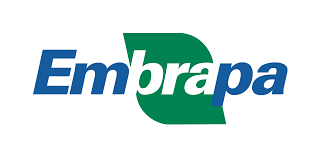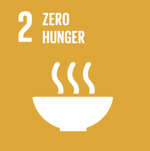Sustainable intensification of legume-based livestock farming: Latin America and the Caribbean cooperation platform
The use of legumes in livestock increases animal productivity, biological N fixation and carbon sequestration in soils, and can reduce Greenhouse Gases emissions (GHG) from the system.
Context of the story
This cooperation platform seeks to improve livestock production systems in LAC through the introduction of legumes in pastures. The main topic is how to produce more meat per unit of CO 2e emitted and thus shed light on how much livestock really is emitting and identify ways to mitigate these emissions. To this end, subjects such as the use of forage legumes and their relationship with the biological fixation of N, the sequestration of C, the emission of GHG, and the impact on animal productivity are addressed.
An important part of the project is dedicated to knowledge management and training, as it is key to disseminate knowledge generated in different formats and to ensure they are available to a wide audience.
Can the use of legumes help us produce more meat while emitting less greenhouse gases?
The implemented initiative
The aim of this project is to enhance livestock systems in Latin America and the Caribbean (LAC) by promoting the use of forage legumes. The project has a particular focus on improving production efficiency and protecting the environment. To achieve this, a cooperation platform has been established to examine the impact of legumes on various factors such as biological nitrogen fixation (BNF), nitrous oxide (N2O), and methane (CH4) emissions, as well as changes in soil carbon sinks due to increased nitrogen input. The study also examines the impact of dietary changes on animal productivity.
To disseminate this knowledge, the project uses multiple channels such as mass media, scientific publications, conferences, and training programs aimed at a diverse audience.
Partnering, cooperating and sharing knowledge: the key to making livestock production more efficient in the region
The technological solution
The member countries of this platform share a common characteristic: beef production is vital to their economies. Additionally, they have the opportunity to use legumes as a forage resource. Despite their differences, legumes can fix atmospheric nitrogen, reducing fertilizer costs and energy consumption. Furthermore, legumes make a significant contribution to plant nutrition and the storage of carbon in the soil. By balancing emissions and carbon retention, it is possible to reduce greenhouse gas emissions from livestock production systems, improving greenhouse gas inventories.
The solution lies in exploring the resources that countries possess but which due to usage, customs, or situational factors are sometimes not adequately exploited. This program aims to train human resources within a framework of collaboration and complementary capacities.
Soil organic carbon (SOC) plays a central role in the C balance. Considerable amounts of CO2 were released into the atmosphere due to land use change and unsustainable agricultural practices, resulting in SOC depletion.
Participating countries
Type of project
Results
The publication of results on enteric and soil CH4 emissions, soil N2O, and BNF has continued. New data on BNF confirm the large proportion of N in plants coming from the air. In the last year, a phase comparing N2O emission data from excreta of grazing animals vs. free-range has concluded, pending sequencing to characterize microbial populations that explain the variations.
Regarding enteric CH4, emissions decrease when pastures have legumes with optimal condensed tannin contents. Partial results show that there is an increase in the C stock of the first centimeters of soil in pastures with legumes.
The data for the calculation of an emission factor from N present in feces and urine in what is today the main cattle-raising region of Argentina are in final review before being published.
The association of pastures with the legume Arachis pintoi decreasing enteric methane emissions by improving the digestibility of the pasture.
CH4 Emissions in fertilized pastures and associated with Arachis pintoi in Minas Gerais, Brazil.


 Back to the project
Back to the project Argentina
Argentina Chile
Chile Dominican Republic
Dominican Republic Ecuador
Ecuador Nicaragua
Nicaragua Paraguay
Paraguay Uruguay
Uruguay Brazil
Brazil
















